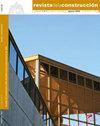Mechanical properties of recycled aggregate concrete surface treated by variation in mixing approaches
IF 1.4
4区 工程技术
引用次数: 0
Abstract
Increased demand for natural aggregates (NA) due to infrastructural development has necessitated the use of alternative aggregates in the field of construction. One such option is the utilization of construction and demolition wastes, preferably named as recycled coarse aggregates (RCA) to produce a sustainable recycled aggregate concrete (RAC). Perhaps, the quality of RCA is usually poor due to the presence of adhered mortar on its surface affecting the strength and durability properties of RAC. Consequently, it is essential to improve the behavior of recycled aggregate concrete. In order to improve the recycled concrete aggregate, four different processing techniques such as two-stage mixing approach (TSMA), mortar mixing approach (MMA), sand enveloped mixing approach (SEMA) and double mixing approach (DMA) were used to improve the quality of RAC. This paper aims at providing a comparative study on the suitability of different mixing approaches and their influence over the fresh and hardened properties of recycled aggregate concrete. The performance behaviour of RAC was evaluated at 7, 14, 28 and 90 days with various percentage replacements of RCA at w/c ratios of 0.45 and 0.5. Experimental results indicate that the strength of concrete made of 100% RCA was equivalent to the target strength at 90 days. Also, among the various mixing processing techniques, MMA shows better fresh and hardened properties of concrete at different curing ages. Micro-structural investigations through SEM were performed to investigate the modification in the ITZ of the RAC through MMA approach.不同搅拌方式处理再生骨料混凝土表面的力学性能
由于基础设施的发展,对天然骨料(NA)的需求增加,因此有必要在建筑领域使用替代骨料。一种这样的选择是利用建筑和拆除废物,最好称为再生粗骨料(RCA),以生产可持续的再生骨料混凝土(RAC)。也许,RCA的质量通常很差,因为其表面存在粘附砂浆,影响了RAC的强度和耐久性。因此,有必要改善再生骨料混凝土的性能。为了提高再生混凝土骨料的质量,采用了两段搅拌法(TSMA)、砂浆搅拌法(MMA)、包砂搅拌法(SEMA)和二次搅拌法(DMA)四种不同的处理技术来提高再生混凝土的质量。本文旨在对不同混合方法的适用性及其对再生骨料混凝土新鲜和硬化性能的影响进行比较研究。RAC的性能行为在第7、14、28和90天进行了评估,在水灰比为0.45和0.5的条件下,RCA的替换百分比各不相同。试验结果表明,100%RCA混凝土在90天时的强度与目标强度相当。此外,在各种搅拌加工技术中,MMA在不同养护龄期表现出更好的混凝土新鲜度和硬化性能。通过SEM进行微观结构研究,以研究通过MMA方法在RAC的ITZ中的改性。
本文章由计算机程序翻译,如有差异,请以英文原文为准。
求助全文
约1分钟内获得全文
求助全文
来源期刊

Revista de la Construccion
工程技术-工程:土木
CiteScore
2.30
自引率
21.40%
发文量
0
期刊介绍:
The Journal of Construction is aimed at professionals, constructors, academics, researchers, companies, architects, engineers, and anyone who wishes to expand and update their knowledge about construction. We therefore invite all researchers, academics, and professionals to send their contributions for assessment and possible publication in this journal. The publications are free of publication charges.
OBJECTIVES
The objectives of the Journal of Construction are:
1. To disseminate new knowledge in all areas related to construction (Building, Civil Works, Materials, Business, Education, etc.).
2. To provide professionals in the area with material for discussion to refresh and update their knowledge.
3. To disseminate new applied technologies in construction nationally and internationally.
4. To provide national and foreign academics with an internationally endorsed medium in which to share their knowledge and debate the topics raised.
 求助内容:
求助内容: 应助结果提醒方式:
应助结果提醒方式:


